
Walt Whitman, one of the most notable poets in American literature, turns 205 this year on May 31. Born in 1819 in Long Island, NY as one of the first generations after the American Revolution, Whitman’s connection to the early United States and his passion for both democracy and abolition influenced many of his most well-known works.
The first of Whitman’s works to gain notoriety was a collection of poems entitled Leaves of Grass, though the exact kind of notoriety received by the initial publication in 1855 wasn’t exactly positive. Whitman had written the collection as an ode to the United States, gathering inspiration from his travels across the budding country and specifically from the radicalization he’d undergone as a witness to the atrocities of slavery. The work was meant to connect Americans to each other and acknowledge the complexity of the human experience, as is reflected in possibly the most popular line in the collection: “I contain multitudes.” Despite its current acclaim, Leaves of Grass was widely disregarded during Whitman’s lifetime due to its nontraditional style of verse and the openness in which Whitman wrote about sexuality.
Whitman did not allow the negative reviews to discourage him, however, and released a second edition of Leaves of Grass in 1856 which added 20 new poems to the existing 12 and gave all 32 poems titles that contained the word “poem” seemingly out of spite for critics who claimed his work was “a series of utterances” rather than actual poetry. The 1860 edition added over 120 new poems to the collection including pieces about homosexuality that were controversial at the time but serve as significant foundations of gay American literature. He would continue revising Leaves of Grass until his death in 1891, producing a total of seven editions.
During the Civil War, Whitman spent much of his free time at hospitals offering companionship and comfort to the injured soldiers there before moving to Washington D.C. and serving as a nurse. When Whitman saw a name in the obituaries resembling that of his brother George’s, who had enlisted in the Union army, he traveled across the country to ensure his brother’s safety. He eventually located George mostly unharmed, but he had ended up on the battlefield to do so and had born eyewitness to the gruesomeness of field hospitals. The sight, along with his passion for abolition and American unity, had prompted Whitman to write the book Drum-Taps, which told of his experiences with the aftereffects of war and urged people towards enlistment. A sequel to Drum-Taps was published later on to include elegies Whitman wrote to Lincoln after his assassination, “When Lilacs Last in the Dooryard Bloom’d” and “O Captain! My Captain!” In 1866, Drum-Taps would be merged into Leaves of Grass.
In 1871, Whitman published Passage to India, a collection of 75 poems celebrating the engineering, architectural, and mechanical achievements of the United States, and Democratic Vistas, which criticized the refusal to extend voting rights to African American men and the materialism and consumerism that had risen in popularity after the war. Similarly, he would publish Memoranda During the War in 1876 to urge people against a growing sentiment of racism and anti-immigration and towards a unity of all men.
Ten years before his death but only three years before he had come to anticipate it, Whitman wrote his final work (not including a deathbed edition of Leaves of Grass) in 1882, an autobiography in prose called Specimen Days that focused largely on his time aiding injured soldiers during the war and reflections on nature. Whitman passed on March 26, 1892 at the age of 72.
You can read a more extensive background on Whitman on The Walt Whitman Archive, where this information has been sourced from. His works can be read through the archive, through Poetry Foundation, or by checking out Leaves of Grass from the library.
Works by Walt Whitman
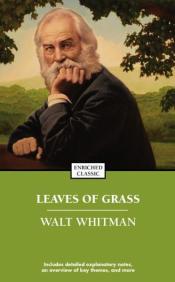
Leaves of Grass by Walt Whitman
“I am large, I contain multitudes”
When Walt Whitman self-published his Leaves of Grass in July 1855, he altered the course of literary history. One of the greatest masterpieces of American literature, it redefined the rules of poetry while describing the soul of the American character. Throughout his great career, Whitman continuously revised, expanded, and republished Leaves of Grass, but many critics believe that the book that matters most is the 1855 original. Penguin Classics proudly presents that text in its original and complete form, with an introductory essay by the writer and poet Malcolm Cowley.
“I celebrate myself, and sing myself,
And what I assume you shall assume,
For every atom belonging to me as good belongs to you.”
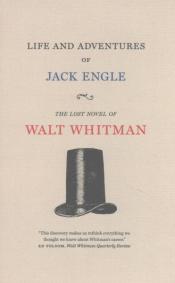
In 1852, young Walt Whitman—a down-on-his-luck housebuilder in Brooklyn—was hard at work writing two books. One would become one of the most famous volumes of poetry in American history, a free-verse revelation beloved the world over, Leaves of Grass. The other, a novel, would be published under a pseudonym and serialized in a newspaper. A short, rollicking story of orphanhood, avarice, and adventure in New York City, Life and Adventures of Jack Engle appeared to little fanfare.
Then it disappeared.
No one laid eyes on it until 2016, when literary scholar Zachary Turpin, University of Houston, followed a paper trail deep into the Library of Congress, where the sole surviving copy of Jack Engle has lain waiting for generations. Now, after more than 160 years, the University of Iowa Press is honored to reprint this lost work, restoring a missing piece of American literature by one of the world’s greatest authors, written as he verged on immortality.
Works about Walt Whitman
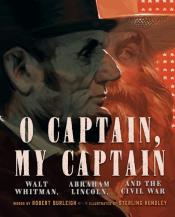
O Captain, My Captain: Walt Whitman, Abraham Lincoln, and the Civil War by Robert Burleigh
Dramatic, lyrical, and beautifully illustrated, author Robert Burleigh and artist Sterling Hundley’s picture book O Captain, My Captain tells the story of one of America’s greatest poets and how he was inspired by one of America’s greatest presidents.
Walt Whitman and Abraham Lincoln shared the national stage in Washington, DC, during the Civil War. Though the two men never met, Whitman would often see Lincoln’s carriage on the road. The president was never far from the poet’s mind, and Lincoln’s “grace under pressure” was something Whitman returned to again and again in his poetry. Whitman witnessed Lincoln’s second inauguration and mourned along with America as Lincoln’s funeral train wound its way across the landscape to his final resting place.
The book includes the poem “O Captain! My Captain!” and an excerpt from “When Lilacs Last in the Dooryard Bloom’d,” brief bios of Lincoln and Whitman, a timeline of Civil War events, endnotes, and a bibliography.
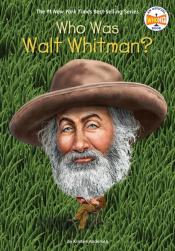
Who was Walt Whitman? by Kirsten Anderson
How did a New York printer become one of the most influential poets of all time? Find out in this addition to the Who HQ library!
Walt Whitman was a printer, journalist, editor, and schoolteacher. But today, he's recognized as one of America's founding poets, a man who changed American literature forever. Throughout his life, Walt journeyed everywhere, from New York to New Orleans, Washington D.C. to Denver, taking in all that America had to offer. With the Civil War approaching, he saw a nation deeply divided, but he also understood the power of words to inspire unity. So in 1855, Walt published a short collection of poems, Leaves of Grass , a book about the America he saw and believed in. Though hated and misunderstood by many at the time, Walt's writing introduced an entirely new writing one that broke forms, and celebrated the common man, human body, and the diversity of America. Generations later, readers can still find themselves in Whitman's words, and recognize the America he depicts. Who Was Walt Whitman? follows his remarkable journey from a young New York printer to one of America's most beloved literary figures.

Walt Whitman: Words for America by Barbara Kerley
Did you know that poet Walt Whitman was also a Civil War nurse?
Devastated by his country dividing and compelled to service by his brother's war injury, Walt nursed all soldiers-Union & Confederate, black & white. By getting to know them through many intense and affecting experiences, he began to see a greater life purpose: His writing could give these men a voice, & in turn, achieve his greatest aspiration—to capture the true spirit of America.
Dramatic, powerful, & deeply moving, this consummate portrait of Whitman will inspire readers to pick up their pens & open their hearts to humanity.
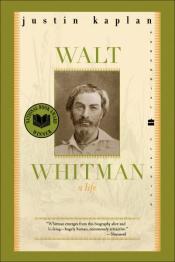
Walt Whitman: A Life by Justin Kaplan
“Whitman emerges from this biography alive and kicking―hugely human, enormously attractive.” ― Newsweek
A moving, penetrating, sharply focused portrait of America’s greatest poet―his genius, his passions, his androgynous sensibility―an exuberant life entwined with the turbulent history of mid-nineteenth century America.
In vivid detail, Justin Kaplan, winner of the Pulitzer Prize and the National Book Award, examines the mysterious selves of this enigmatic man whose bold voice of joy and sexual liberation embraced a growing nation…and exposes the quintessential Whitman, that perfect poet whose astonishing verse made “words sing, dance, kiss, copulate” for an entire world to hear.

Walt Whitman in Mickle Street by Elizabeth Leavitt Keller
Walt Whitman (1819 – 1892) was an American essayist, poet, and journalist who was pivotal to the transition from transcendentalism to realism. His work was notably divisive and claimed by many to be obscene when first published, but he is now considered to be one of the most influential people in the American poetic canon and the “father of free verse”. This volume contains an account by Elizabeth Leavitt Keller (1839-1928) of Whitman's life at his home on Mickle Street in New Jersey, United States; where he resided—mostly bedridden—following a paralytic stroke in 1873. Contents “Mary Oakes Davis”, “Walt Whitman's Home”, “The New Regime”, “Curious Neighbours”, “Mr. Whitman Drives”, “Brooms, Bills and Mental Chloroform”, “Visiting and Visitors”, “A Bust and a Painting”, “Rest—And Routine”, “A Shock, and Some Changes”, “Anchored”, etc. Other notable works by this author “Franklin Evans” (1842), “Life and Adventures of Jack Engle” (1852), and “Leaves of Grass” (1855). Many vintage books such as this are becoming increasingly scarce and expensive. It is with this in mind that we are republishing this volume now in an affordable, modern, high-quality edition complete with the original text and artwork.

One of the most-recognized figures in American literary history: poet, patriot, and faithful advocate of democracy. But in his own time, critics denounced Walt Whitman as a "lunatic raving in pitiable delirium". This "American experience" production tells Whitman's life story, from his working-class childhood in Long Island to his years as a newspaper reporter in Brooklyn when he struggled to support his impoverished family, then to his reckless pursuit of the attention and affection he craved for his work, to his death in 1892 at the age of 72.